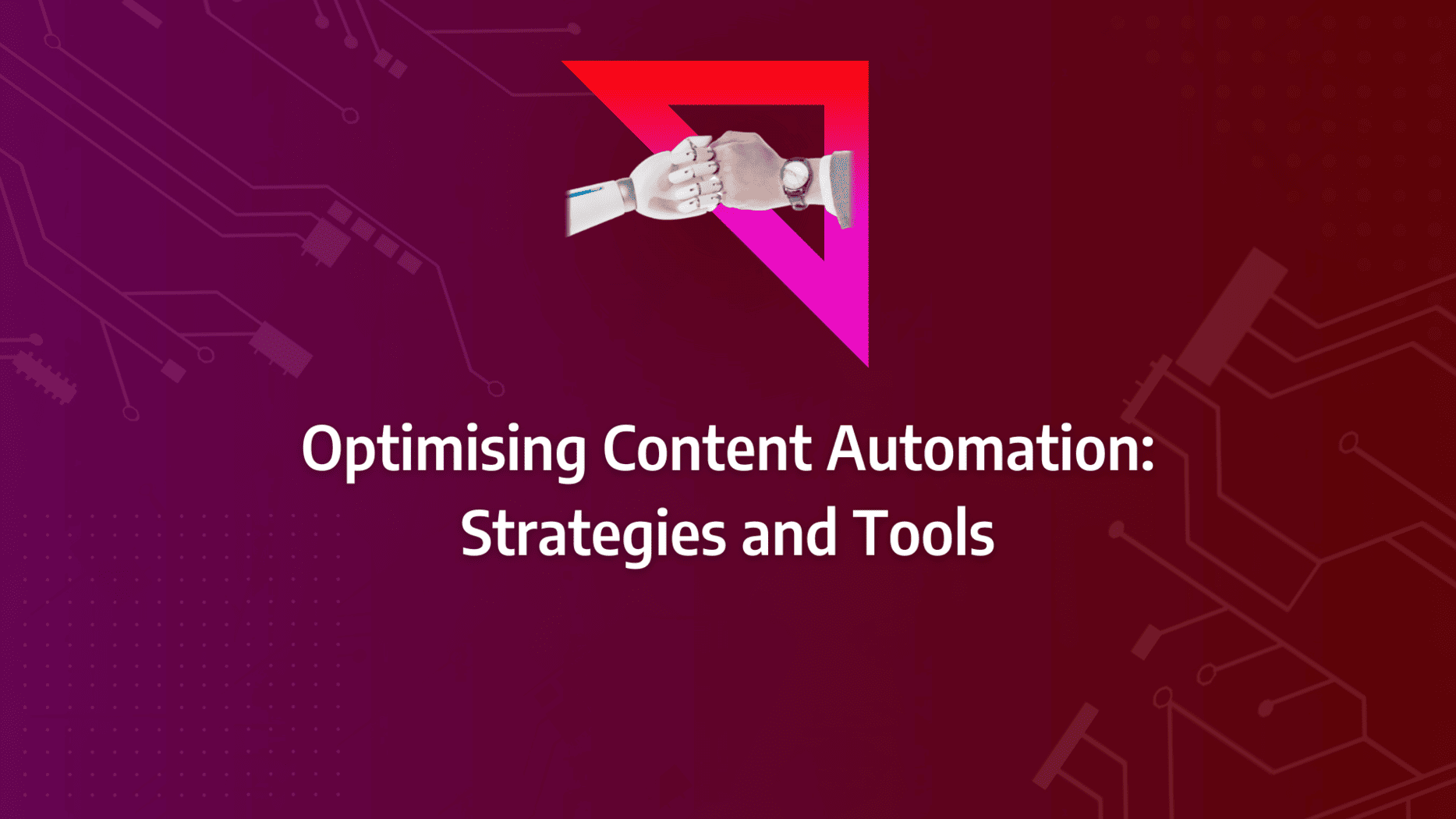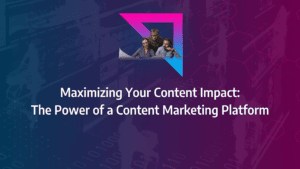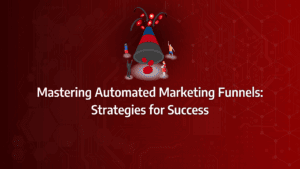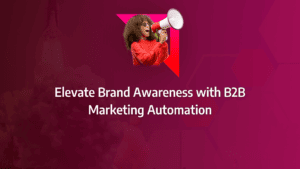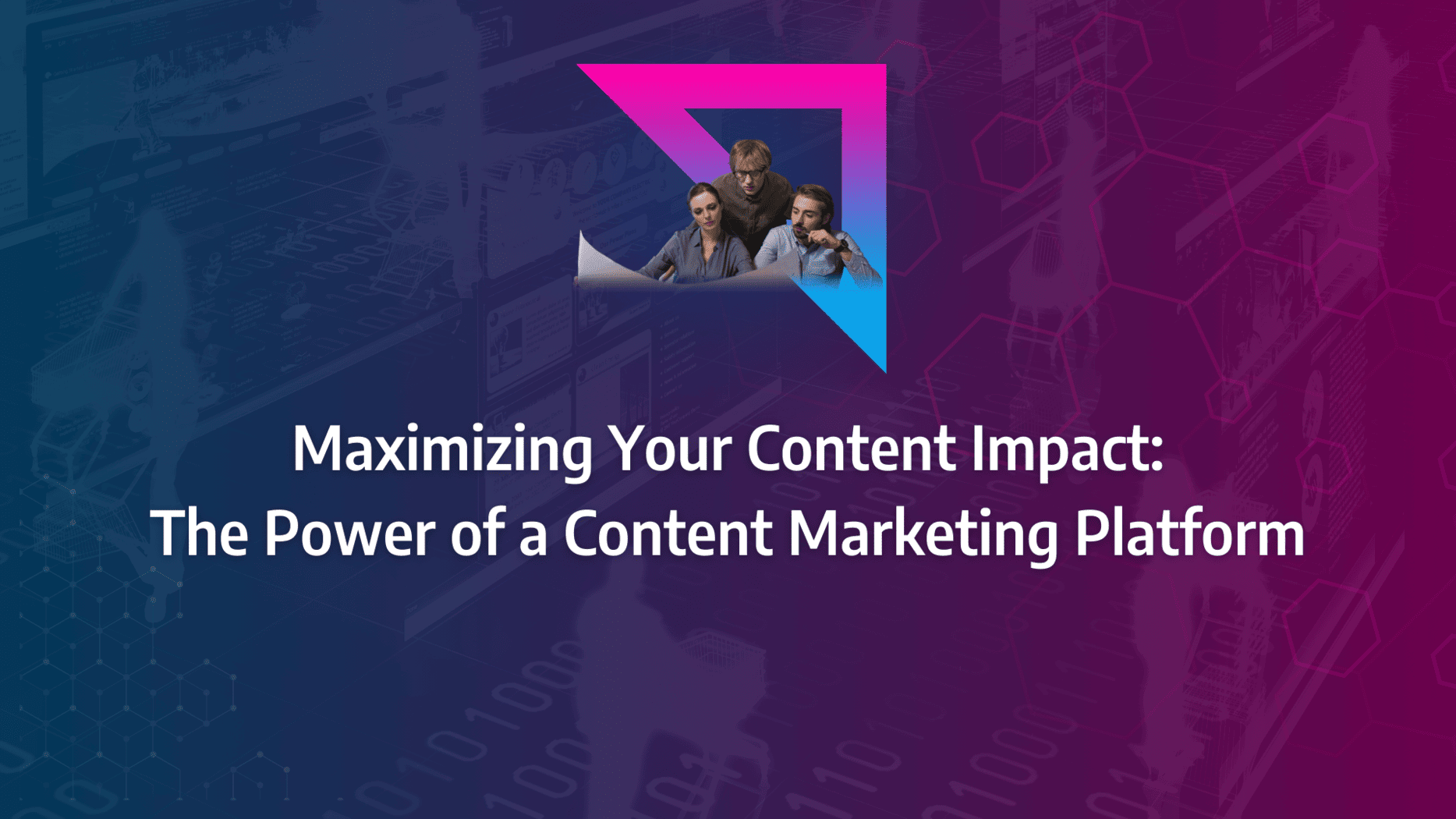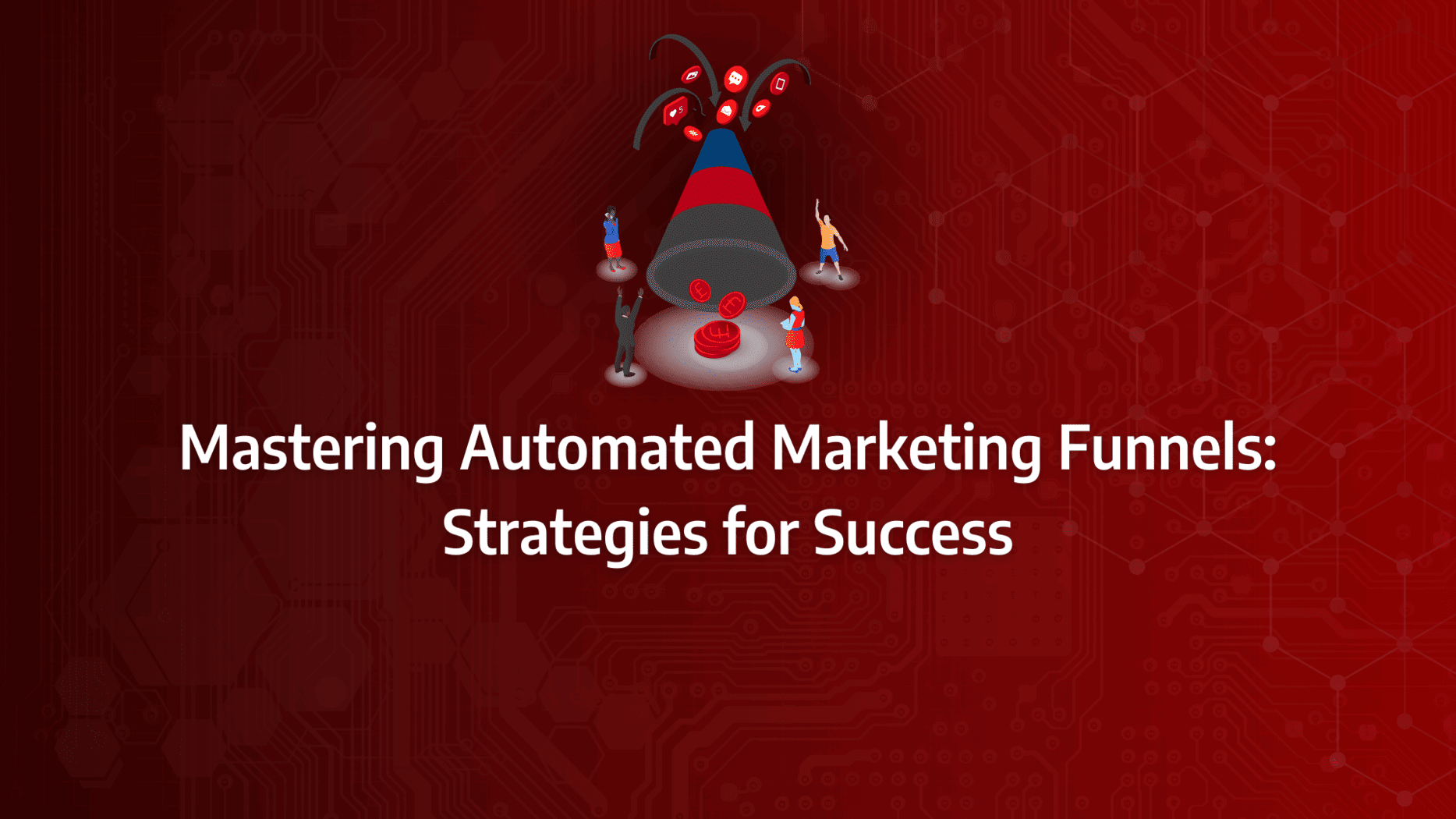Have you ever felt overwhelmed by the sheer volume of content required to keep your marketing efforts on track? You’re not alone. Many businesses find themselves struggling to maintain consistency and quality in their content output, especially as the demands of digital marketing continue to grow.
This is where content automation tools come in, offering a lifeline to marketers drowning in tasks. Without the right automation strategy, your content process can quickly become a bottleneck, leading to missed opportunities and burnout. But with the right tools and approach, you can streamline your content production, ensuring that every piece you publish is timely, relevant, and aligned with your overall strategy.
- Streamline Content Production: Implement content automation tools to streamline your content production process, ensuring consistent output without overwhelming your team.
- Enhance Content Quality: Automation doesn’t mean compromising on quality. Use the right tools to maintain high standards while increasing efficiency in your content creation.
- Align with Overall Strategy: Ensure that your automated content is aligned with your broader marketing strategy, keeping your messaging consistent and on-brand.
- Reduce Manual Effort: By automating repetitive tasks, you can free up your team’s time to focus on more strategic, creative aspects of your marketing efforts.
- Select the Right Tools: Choose content automation tools that fit your specific needs and integrate seamlessly with your existing systems for optimal performance.
How can content automation tools enhance my content marketing strategy?
What is Content Marketing?
Content marketing encompasses the strategic approach to planning, creating, distributing, and sharing content across multiple platforms, including social media, blogs, websites, podcasts, applications, press releases, and print publications. The primary aim is to connect with your target audience, enhance brand visibility, drive sales, increase engagement, and cultivate customer loyalty.
Understanding Content Automation Tools
Creating high-quality, detailed, and engaging content is a cornerstone of any robust content marketing strategy. Traditionally, this process requires either significant time investment or the hiring of skilled content writers with strong SEO knowledge, both of which can be costly and time-consuming. However, with the rapid increase in demand for content, content automation tools leveraging Artificial Intelligence have become indispensable. These tools can generate quality content swiftly and efficiently. Additionally, there are tools for content scheduling, image and video creation, strategy planning, and analysis, making them invaluable for comprehensive content marketing.
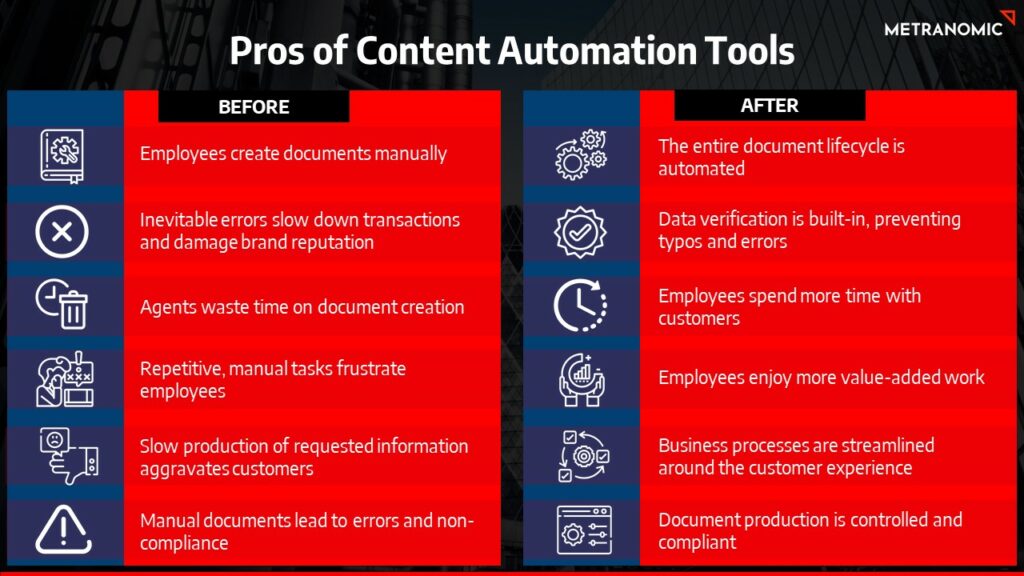
Measuring the Success of Automated Content
Once you’ve implemented content automation tools, the next crucial step is to measure their success. Here’s a comprehensive approach to tracking and optimising the performance of your automated content:
- Key Performance Indicators (KPIs): Establish clear KPIs that align with your marketing goals. These could include lead generation, conversion rates, or engagement metrics. For instance, if using content automation software for email marketing, track open rates and click-through rates to gauge effectiveness. These metrics are essential for evaluating the impact of content automation platforms on your marketing objectives.
- Analytics Tools: Utilise robust analytics tools like Google Analytics to gain deep insights into content performance. These tools can help you understand user behaviour, such as which content pieces are driving the most traffic or engagement. This information is crucial for content marketing automation, as it guides you in optimising your content strategy based on actual user data.
- Audience Engagement: Monitor how your audience interacts with your automated content. Look at metrics like page views, time spent on page, and social shares. These indicators are vital for assessing the effectiveness of your content automation software. For example, low engagement might indicate a need to refine your content or adjust your automation strategy.
- ROI Calculation: Calculate the return on investment (ROI) of your content automation tools. This involves comparing the costs associated with these tools against the revenue or value they generate. For instance, if your automated content management system saves significant time in content creation and distribution, quantify this in terms of resource savings and increased productivity.
- Continuous Optimization: Use the data and insights you gather to continuously refine and optimise your content automation strategy. This might involve tweaking your editorial calendar tools, enhancing your SEO content optimization, or adjusting your content mix based on performance analytics. The goal is to create a dynamic, data-driven content automation process that evolves with your business needs and market trends.
What Matters Most?
From our experience, emphasising storytelling in automated content is fundamental for enhancing engagement. Clients often discover that crafting relatable narratives can make their automated messages feel more personal and resonate deeply with audiences. Implementing a strategic content calendar typically ensures consistency and better alignment with audience needs, allowing for a cohesive content approach. Additionally, leveraging data analytics to refine strategies often leads to improved performance, as insights from audience interactions inform future automation efforts.Get In Touch
What are the top benefits of investing in content automation?
For businesses prioritising performance and seeking efficiency, automating content marketing activities is crucial. Here’s why content automation plays a vital role in your marketing processes:
Reducing Staffing Costs
Utilising content automation tools, a single employee can perform the tasks of an entire marketing and sales department. Automated lead nurturing and marketing campaigns, activated based on specific parameters, allow your company to send out thousands of customised emails daily on autopilot, significantly reducing staffing expenses.
Enhancing Sales and Increasing Deal Sizes
Automating cross-sells, up-sells, and follow-ups can significantly improve consumer lifetime value. Combined with better lead management and prioritisation, your sales operations can achieve a higher ROI, contributing to overall business growth.
Improving Transparency Between Marketing and Sales Teams
With clearly defined procedures and comprehensive reporting of the company’s pipeline, content marketing automation tools provide transparency. They pinpoint bottlenecks, enabling your marketing department to receive instant, unbiased feedback. This feedback helps in refining nurturing campaigns and fosters a transparent, efficient system that eliminates difficult conversations and organisational politics.
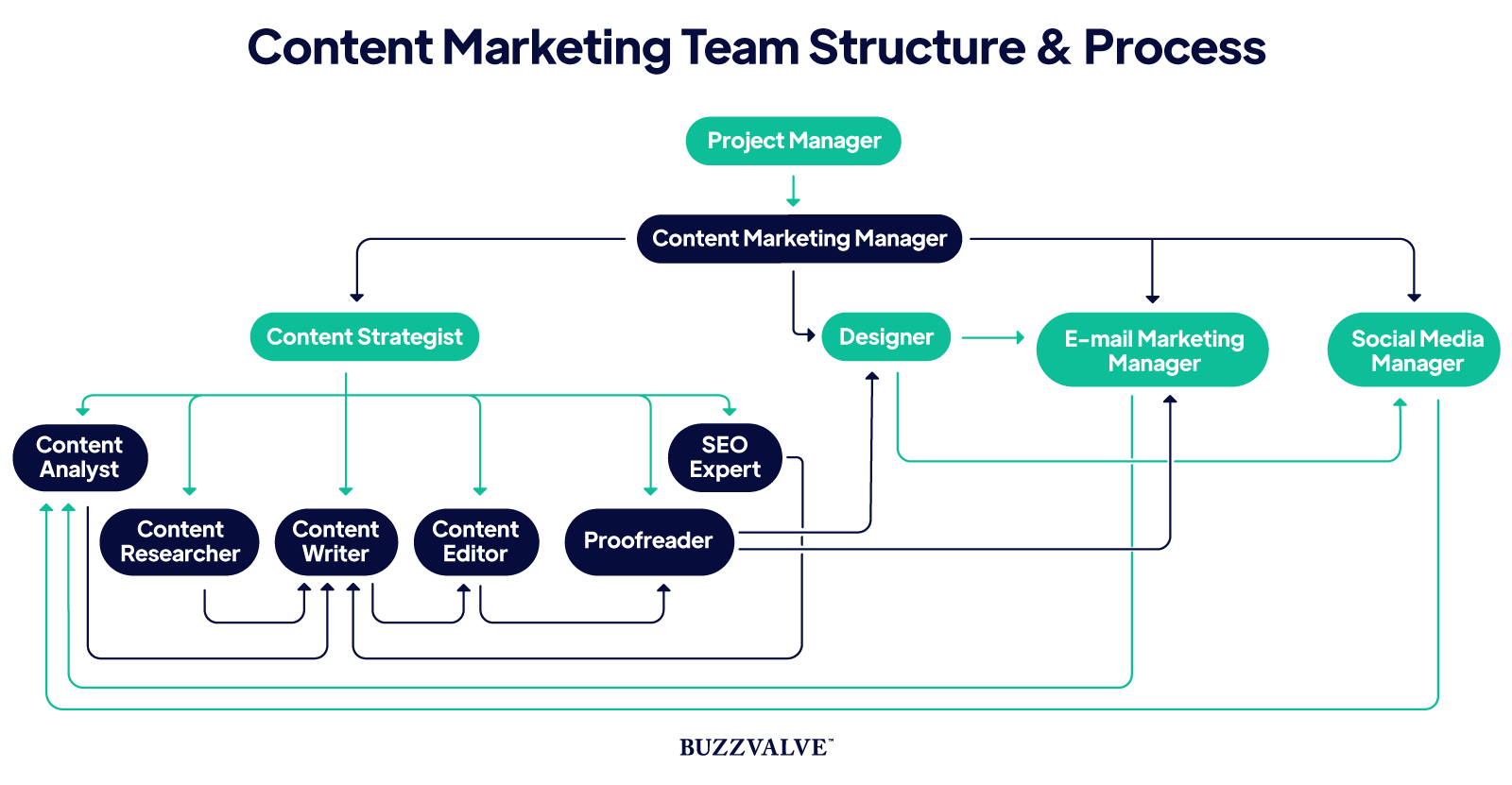
Maximising Efficiency
For businesses with limited capital, content automation maximises the productivity of available hours, irrespective of team size. Tools like elink.io allow the creation of automated newsletters for any email client, and automated content pages for your website from RSS feeds, enhancing overall efficiency.
Reducing Repetition and Encouraging Innovation
Automating repetitive tasks frees up time for employees to focus on creative and innovative activities. This boost in creativity can lead to significant productivity and performance benefits, enabling your team to achieve and exceed their goals, and fostering organisational success.
By leveraging these content automation tools, businesses can streamline their marketing efforts, ensuring that processes are efficient, transparent, and highly productive.
Best Practices for Content Automation
As content marketing continues to evolve, several trends are emerging that businesses must embrace to generate leads and drive profits effectively. Here’s how to leverage content automation tools for maximum impact.
Personalisation is Crucial
Audiences today expect personalised content. Utilising AI and machine learning, content automation tools can dynamically integrate personalised content based on various parameters. This advanced segmentation allows you to present tailored content to different visitors on your website, considering their previous purchases, pages viewed, industry, and more.
For email campaigns, dynamic content proves invaluable. AI-driven drip campaigns, triggered by buyer actions, ensure that the content and messaging are highly relevant to each recipient’s experiences. This relevance significantly boosts engagement, evidenced by higher open and click-through rates.
Centralise Your Content Marketing Efforts
A central hub, such as a content marketing automation platform, is essential for effective content automation. Without this, the primary benefits of automation—time and resource efficiency—are lost. A comprehensive platform should offer:
- Content Calendars: Easily shareable and accessible.
- Production Workflows: Accommodating both simple and complex processes.
- Content Archive: Secure storage for approved assets with relevant metadata.
- Automated Reporting: Streamlined analytics from multiple sources.
- Integrations and Open API: Seamless connection to multiple downstream delivery systems.
By consolidating all automation features into a single system, businesses can adopt these tools more easily and maximise their benefits.
Simplify Deployment and Disbursement
Manual publishing of content and setting up ads on social media is both time-consuming and resource-intensive. A robust content marketing automation software platform, with integrations to downstream publishing tools, can automate these tasks efficiently.
Returning to manual processes is inefficient and not feasible for scaling operations. Content automation tools ensure that publishing is streamlined and that resources are utilised optimally, reinforcing the indispensability of automation in modern marketing strategies.
Automate Content Creation for Maximum Efficiency
If you associate automated content with the nonsensical outputs of early article “spinners” designed to game Google’s algorithm, it’s time to reconsider. Modern content automation software is far more sophisticated and capable.
Over the past decade, the AI industry has advanced significantly, particularly in content creation. Leading news publishers, like The Washington Post, utilise AI technology to generate concise reports and social media updates on sporting events. Content automation tools now recommend topics, suggest keywords, and even create comprehensive article outlines with subheadings, ready for a writer’s refinement.
One of the standout features of AI in content creation is its ability to craft compelling headlines. These AI-powered tools analyse your content and generate attention-grabbing headlines optimised to engage your audience effectively.
Streamline Content Curation
While AI may never completely replace human creativity in content creation, content curation is a task well-suited for automation. Maintaining a robust social media presence requires a steady stream of high-quality, relevant content, which can be time-consuming to curate manually.
Content discovery tools can scan the internet for content related to specific keywords and rank it based on social shares, likes, and comments. You can then select the most suitable content to populate your social media feeds, ensuring continuous engagement without the extensive manual effort.
Enhance Workflow Efficiency with Automated Content Workflows
Even if you prefer to retain control over content creation, content automation can significantly enhance your workflow. Automation platforms allow you to queue and schedule social media posts and other content in advance, ensuring timely and consistent posting without manual intervention.
Content scheduling tools not only automate postings but also help you determine optimal posting times for maximum engagement. They can even identify new distribution channels for your content.
Moreover, automation isn’t limited to content distribution. Tools like DivvyHQ enable you to create custom workflows that automatically populate your content calendar with tasks, eliminating the need for repetitive planning. This is particularly beneficial for high-volume teams with numerous contributors, saving considerable time and streamlining operations.
Embrace Automated Content Marketing
A 2019 In-House Creative Management Report revealed that as teams grow, creatives spend more time on administrative tasks. Nearly half of the surveyed professionals spend a day or more per week on non-creative work, with 22% dedicating over 10 hours to chasing down information, feedback, and approvals.
This issue is intensifying year by year, making it imperative for content marketing managers to adopt efficient solutions. The report also highlighted that creatives who spend less time on administrative tasks report more effective leadership, better use of best practices, and more efficient market results.
If you haven’t yet integrated automation into your marketing strategy, now is the time. Today’s content automation software is sophisticated and cost-effective. The investment in automation tools and platforms is quickly recouped through increased efficiency and improved campaign ROI.
Top Tips for Effective Website Content Creation
Consider Your Audience’s Readability
Creating content with your audience in mind is paramount. The primary objective is to meet user expectations and fulfil business goals. It is essential to define your target audience and tailor the readability of your content to their literacy levels. For instance, if your content is designed for highly literate visitors, those with lower literacy levels may struggle to engage with it effectively. This directly impacts the user experience. The bottom line is to keep your content simple and straightforward to enhance readability.

Examine the Five W’s (and H) of Content
This journalistic formula ensures that the story conveyed is comprehensive and clear. It is equally relevant in website design and content creation:
- Why: Why are you embarking on this project? Define the business case and primary objectives.
- What: What is the message you want to convey through your content?
- Who: Who is the audience? Who are you creating the content for?
- Where: Where will the content be read? Consider the device, location, and context.
- How: How should we present the content? Define the structure, framework, and tone.
- When: What is the timeline for creating the content?
Using this formula as a checklist ensures your content strategy is thorough and well-rounded.
Set the Voice and Tone of Your Content
A brand’s voice is crucial in establishing a distinct identity. It should remain consistent across all channels and content. However, the tone must adapt to the content’s relevance and context. Start by understanding the nature of your business and deciding how to market your brand. Are you targeting serious and technical visitors, or is there room for humour? You can determine the best fit by analysing your website’s design and user interface.
Focus on Search Engine Optimisation (SEO)
SEO should be at the core of all content strategies. Despite the increasing difficulty in ranking on the first page of search engine results, it’s vital not to abandon SEO efforts. Instead, focus on enhancing White Hat SEO and inbound marketing outputs. The best way to achieve higher search engine rankings is by creating valuable and purposeful content that genuinely engages users.
A well-positioned content strategy should adhere to the webmaster guidelines of respective search engines and contribute to building the brand.
Create Interesting and Valuable Content
When producing website content, view it from a layman’s perspective. Unlike you, visitors may be unfamiliar with your website’s and business’s workings. Provide ample information on relevant topics to guide your visitors. Avoid using jargon and ensure the content is crisp and easy to read. Consider the questions visitors might have and help them find answers quickly.
Ensure the content remains synchronised and relevant, inspiring your audience to take action.
Our Tactical Recommendations
Integrating content automation tools with CRM systems is crucial for streamlining workflows and enhancing customer targeting based on behavioural insights. We often find that experimenting with different content formats in automated campaigns uncovers what resonates best, leading to more effective engagement strategies. Moreover, automating the distribution of repurposed content typically maximises reach and efficiency, allowing teams to focus on creating high-quality new content.Get In Touch
Eye-Opening Examples of Content Automation Tools
QuillBot
-
- A natural language generation platform that provides personalised descriptions.
- Uses data and insights from various business aspects to make content interactive and engaging.
Articoolo
-
- Mimics human writing by understanding concepts and analysing detailed information.
- Produces clear, concise, and crisp content.
Word AI
-
- Converts keywords into meaningful sentences, creating relatable content.
- As per the Content Marketing Institute, 73% of marketers still use blogs and articles, and 56% prefer eBooks. Word AI makes writing these easier.
Article Forge
-
- Reads multiple articles on a topic and rewrites them into captivating content.
- Ideal for creating high-quality content quickly.
AI Writer
-
- Produces high-quality, SEO-optimised content.
- Offers website templates, aiding in brand growth and content creation.
Scoop.it
-
- A predictive content writing platform that uses past performance insights.
- Provides content strategy suggestions based on best practices, making planning and execution easier.
